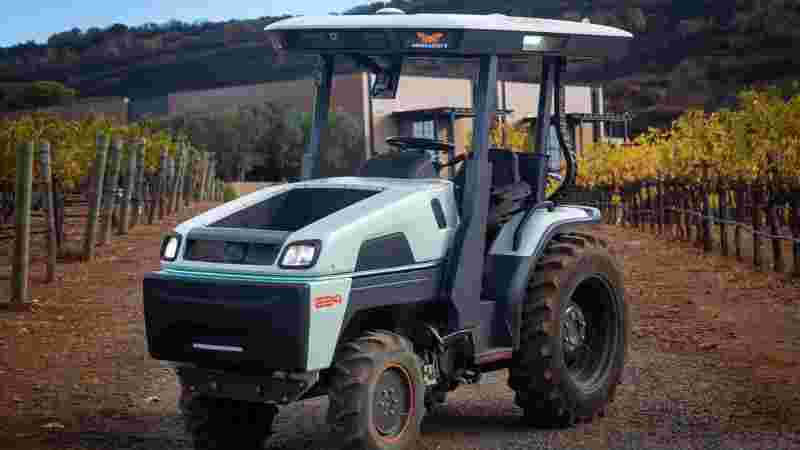Electric farm tractors are dramatically reshaping the agricultural landscape by offering eco-friendly, efficient, and technologically advanced alternatives to traditional diesel-powered machines. As global agriculture moves towards sustainability and precision farming, electric tractors deliver reduced emissions, lower operational costs, and integration with smart farming systems. In 2025, mounting government incentives, battery technology improvements, and innovative models from leading companies worldwide are accelerating adoption and growth in this niche sector.
According to Straits Research, the global electric farm tractor sector was valued at USD 175.99 million in 2024 and is expected to grow from USD 194.19 million in 2025 to reach USD 426.67 million by 2033, registering a compound annual growth rate (CAGR) of 10.34% during the forecast period (2025–2033).
Key Trends and Innovations Driving Electric Farm Tractor Growth
-
Battery and Fast-Charging Advancements: Improved lithium-ion battery capacity and fast-charging technology enable electric tractors to operate longer on a single charge with minimal downtime. Many new models offer 8–12 hours of runtime, suitable for full-day farm activities, and recharge times as low as 4 hours, enhancing efficiency and convenience.
-
Autonomous and Smart Features: Integration of GPS, telematics, and AI-powered autonomous driving capabilities is becoming common. Models like John Deere’s Autonomous 9RX and Kubota’s Futurecube advance precision agriculture, reduce operator fatigue, and optimize fuel and input usage, ultimately maximizing yields.
-
Versatility and Modular Designs: Modern electric tractors are designed to handle a wide array of implements including sprayers, tillers, seeders, and harvesters. Modular platforms allow farmers to customize tractors based on specific farm sizes and tasks, supporting scalability from smallholdings to large commercial operations.
-
Zero Emissions and Quiet Operation: Electric farm tractors produce no direct emissions, significantly reducing the carbon footprint of farming operations. Their nearly silent operation also reduces noise pollution, enabling usage in noise-sensitive environments and improving operator comfort.
Leading Players and Country-Specific Updates
-
United States: John Deere is at the forefront with models like the Autonomous 9RX and the 5ML Orchard Tractor, featuring both electric powertrains and autonomy. US manufacturers benefit from strong support for precision agriculture and clean energy adoption. Firms such as Monarch Tractor also innovate with AI-driven autonomous electric tractors designed for row-crop and specialty farming.
-
Europe: European companies like Fendt with its Fendt e100 Vario and Rigitrac SKE 40 are advancing electric tractor adoption focusing on ergonomic design and low environmental impact. The EU’s stringent emission standards and subsidy programs for green farming accelerate procurement of electric machinery across Germany, France, and the Netherlands.
-
China: Government incentives for sustainable agriculture support expansion by Chinese manufacturers. Brands including Kubota, active in China, are launching electric models like the Kubota Futurecube and LXe-261. Investments in battery supply chains and integration with smart agriculture platforms highlight China's ambitious green farming initiatives.
-
India: India is rapidly emerging as a vibrant market with startups and established firms like Sonalika, Autonxt, HAV, and Montra offering several electric tractor models designed for India's small to medium farm sectors. The Sonalika Tiger Electric, India’s first field-ready electric tractor, combines affordability, fast charging, and adequate power for diverse Indian crop conditions. Support from government rural electrification and sustainable farming programs is fueling growth.
-
Japan and South Korea: These countries focus on compact electric tractors suited for smaller, high-value farms. Local companies integrate advanced telematics and offer features tailored for efficient operation in tight agricultural spaces. Japan’s precision farming approach incorporates electric tractors as key elements in high-tech farm ecosystems.
Global Tariff Impact on Electric Farm Tractor Industry
Since 2024, tariffs on lithium-ion batteries, semiconductors, and electronic components between countries such as the US, China, and Europe have affected production costs and supply chains in electric farm tractor manufacturing. These tariffs have increased the cost of key raw materials and battery cells, prompting manufacturers to diversify suppliers and invest in domestic production capabilities. Governments in major agriculture regions are promoting localized battery manufacturing and semiconductor production to reduce dependency on tariff-sensitive imports. Despite short-term cost increases, these measures are fostering innovation in supply chain resilience, improving long-term competitiveness and accelerating development of cost-effective electric tractors.
Recent Industry News and Developments
-
In early 2025, Monarch Tractor unveiled new autonomous electric tractors equipped with enhanced AI navigation and remote operation features targeting vineyard and orchard applications.
-
John Deere expanded its electric tractor lineup and demonstrated field trials of fully autonomous farming systems integrating electric drive technology with precision planting.
-
Sonalika Tiger Electric gained traction among Indian farmers with new financing schemes making electric tractor acquisition more accessible to smallholders.
-
Kubota launched advanced versions of its Futurecube electric tractor with improved battery life and faster charging, reinforcing its leadership in Asian markets.
-
European brands like Fendt report increased demand for electric tractors from environmentally conscious vineyards and specialty crop producers.
Growth Outlook and Future Directions
The electric farm tractor sector is poised for solid growth through 2033, driven by sustainability mandates, decreasing battery costs, and expanding smart farming adoption globally. Expect rapid innovation in battery chemistry, autonomous capabilities, and connectivity integration. Hybrid hydrogen-electric systems may also emerge as complementary solutions. Governments across developed and developing nations will continue to promote subsidies and infrastructure development to accelerate electrification of agricultural machinery. The fusion of IoT, AI, and robotics with electric traction will usher in an era of highly efficient, environmentally responsible farming, reducing emissions while boosting productivity.
Summary
Electric farm tractors are transforming agriculture with sustainable, efficient, and autonomous solutions powered by advanced batteries and AI. Despite tariff-driven supply challenges, global players are innovating rapidly, supported by expanding government incentives and marketplace growth. The future promises widespread adoption of smart electric tractors that enhance productivity and environmental stewardship worldwide.




